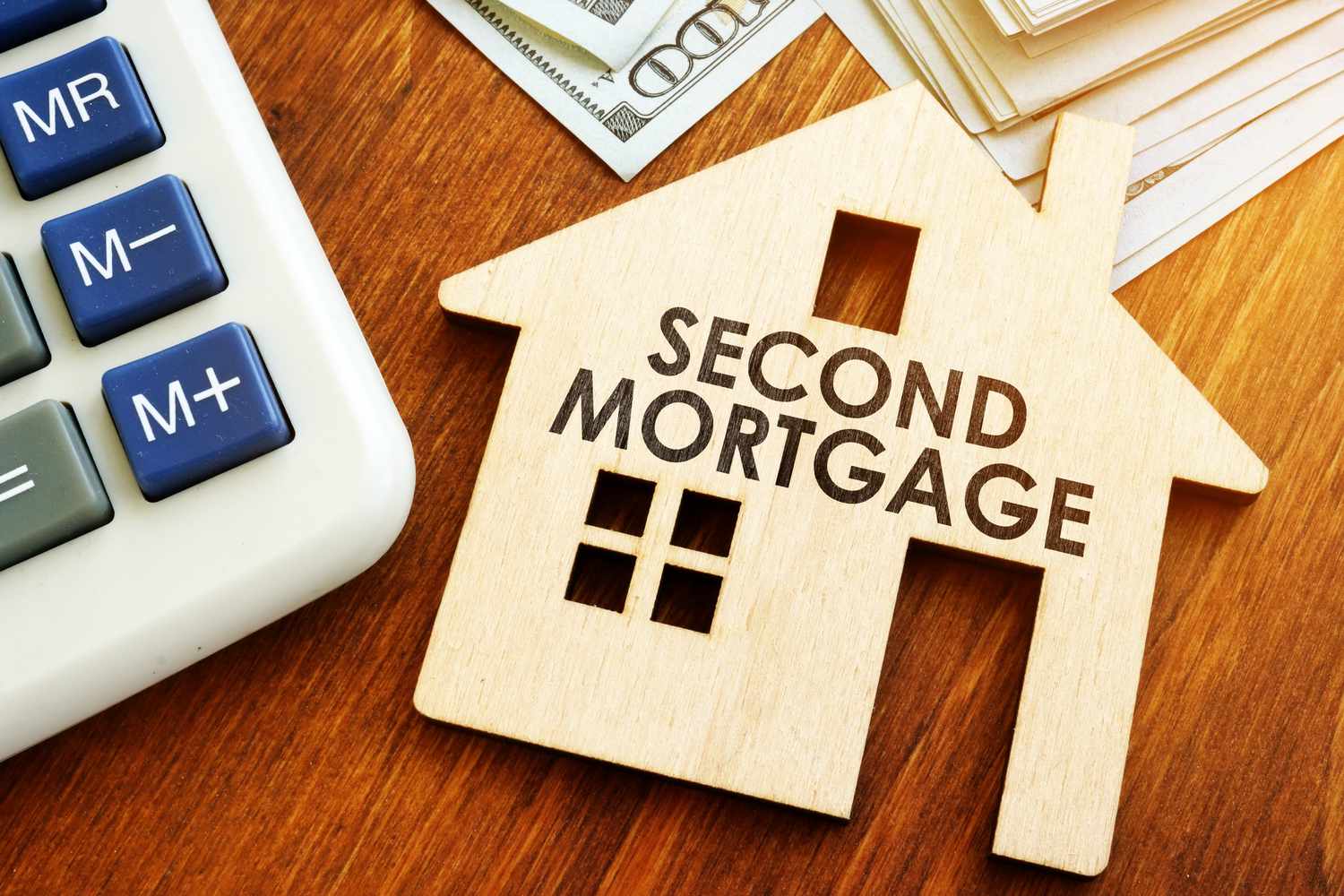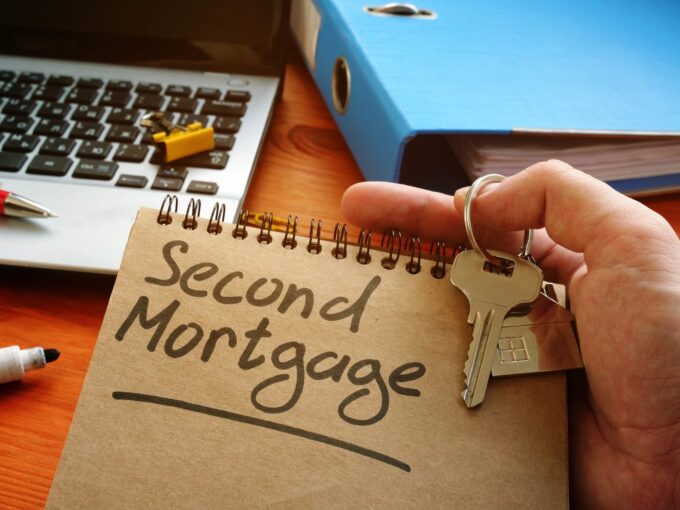A Second Mortgage is a type of subordinate mortgage that allows homebuyers to borrow home equity while they already have a current or first mortgage on the property. A Second Mortgage is a home-secured loan taken out while the original, first, mortgage is still being repaid. A Second Mortgage is a loan made in addition to the homebuyer’s primary mortgage. Second Mortgage often have slightly higher interest rates than first mortgages but lower interest rates than personal loans. Home equity lines of credit (HELOCs) are often used as the Second Mortgage.
The Second Mortgage is the type of Mortgage Loan that lets homebuyers borrow against the value of the home. Second Mortgage or junior lines are a way to turn homeowners’ home equity into readily available funds without selling their house. A Second Mortgage increases the homebuyer’s overall debt and can lead to foreclosure if they are unable to pay it back. These Mortgage loans are considered Second or Junior because, in the event of bankruptcy or foreclosure, it is second in line to be paid off after their original Mortgage Loan.
While a Primary Mortgage facilitates the purchase of the property, the Second Mortgage allows homeowners to secure an additional loan, with the property still serving as collateral. A Second Mortgage is a loan taken out on a home that already has an existing mortgage. With the Second Mortgage, the homebuyers can borrow against their home equity to access cash. In other words, the Mortgage Lenders have the right to take control of their home if they default on their loan. When homebuyers take out the Second Mortgage, a lien is taken out against the portion of their home that they have paid off.
What Is a Second Mortgage?
A Second Mortgage is a lien that is taken against a house when a new loan is issued and the first loan is still outstanding. Second Mortgages are separate loans that have their own applications, closing costs, and monthly payments. The second Mortgage allows homebuyers to borrow against the equity in their homes without having to refinance the first mortgage. Using the Second Mortgage Loan, homebuyers can borrow up to 85% of their total home value for as little as 2% point over prime rates, and closing costs. A Second Mortgage is a loan the homebuyers take in addition to their first mortgage.
The homeowners use the equity in their home as collateral to get the Second Mortgage. The equity is the current market value of the home minus the balance on their existing mortgage. When homebuyers take out Second Mortgage, they have two home mortgages and two mortgage payments. both might be with the same lender or with different lenders. The homeowners are responsible for making both mortgage payments every month according to the terms of each separate loan.
What Are The Benefits of a Second Mortgage?
Here are some of the Benefits of Second Mortgage to the borrowers:
- Don’t have to refinance First Mortgage.
- Don’t always have to get a new appraisal.
- May be able to draw money over time and only pay interest on what the homeowners borrow.
- A good way to build borrowers’ credit if they pay on time.
- Mortgage loans are often cheaper than other types of debts.
How Does a Second Mortgage Work?
A Second Mortgage works a lot like a first mortgage. To obtain a Second Mortgage, homebuyers typically need to do the same things they did to qualify for a Primary Mortgage. The Second Mortgage process includes submitting an application to a mortgage lender and providing documentation regarding their income, debts, and assets. The homeowners might also need to get an appraisal to confirm the current value of their home. The Qualifications for the Second Mortgage vary but most of the mortgage lenders prefer that they have at least 15% to 20% equity in their home. However, homeowners can typically borrow up to 85% of their home’s value, minus their current mortgage debts.

What Are the Types of Second Mortgage?
Second Mortgage comes in many shapes and sizes depending on the mortgage lenders the borrowers work with. Generally, Second Mortgage loans fall into one of two categories i.e. Home Equity Loans and Home Equity Lines of Credit.
- Home Equity Loans: All of the Loan funds are provided upfront in one lump sum in Home Equity Loans. The borrowers make equal monthly payments consisting of both Principal and Interest until the loan is paid off at the end of the loan term. Home Equity Loans come with fixed rates.
- Home Equity Line of Credit (HELOC): The mortgage lenders take a lien against the property upfront, but the homebuyers have the option of borrowing available funds overtime when needed. The borrowers make regular monthly payments that are usually interest-only during what’s called the draw period of 10 years. When this period ends then the repayment period starts and mortgage borrowers need to make the monthly principal and interest payments. Home equity lines of credit (HELOCs) come with a variable rate.
- Piggyback Loan: It is the Second Mortgage which is taken out at the same time as the primary Mortgage. A piggyback loan is also called the 80-10-10 loan. A Piggyback Loan allows homebuyers to avoid paying mortgage Insurance by combining the Second Mortgage for 10% of the home’s cost with a primary mortgage for 80% of the home’s cost.
What are the Costs of a Second Mortgage?
A Second Mortgage has upfront costs that often total 2% to 5% of the loan amount, and costs paid over time. Many of these costs are the same as the Primary Mortgages but are assessed and paid separately, as these are separate loans. Some of the second mortgage Costs include Origination fees often 1% to 2% of the loan amount, Interest rates typically starting at prime plus 2%, Title work, and documentation preparation fee, and the Appraisal fee, if the borrower needs a new appraisal, they will probably pay a couple of hundred dollars for one.
What are the Requirements to Qualify for the Second Mortgage?
In order to Qualify for the Second Mortgage, The homebuyers must meet the following requirements:
- Have the remaining balance on the current mortgage that’s less than 85% of the home’s value.
- Own at least 15% to 20% of the home outright.
- Have a credit score of 600 or higher.
How To Get a Second Mortgage?
The Steps for Getting a Second Mortgage are much the same as getting a first Mortgage when a Borrower buys a house. The key difference with Second Mortgage is that the homebuyers already own the property. Homebuyers who are looking to get a Second Mortgage must follow these basic steps:
- Choose a Lender: If homebuyers have an existing relationship with a bank, that’s usually the first place to look.
- Apply For a Loan: Each Mortgage lenders have its application process with different documentation to apply.
- Provide Personal Financial Information: The Mortgage lender will also see a good deal of information related to financing such as pay stubs and usually two years of tax returns.
- Submit to Appraisal and Inspection: If the borrower’s property has not been appraised in the last 3 to 6 months, the Mortgage lenders will likely want to get a new appraisal and even want to inspect the property.
- Close and Secure Loan Proceeds: Once the Loan is approved, The homebuyers have to close on the loan and get access to their funds.
Second Mortgage Reviews
A Second Mortgage allows eligible borrowers to tap into their property’s equity. Some of the most common uses of Second Mortgages include debt consolidation, home improvements, and large purchases. Taking out a Second Mortgage has various advantages, including access to unrestricted funds, competitive interest rates, and possible tax breaks. Here are some of the Pros and Cons of Second Mortgage:
Pros:
- A Second Mortgage provides a way to access the equity in the home.
- The Interest Rates on a Second Mortgage are lower than the Personal Loans.
- The Homeowners can use the funds for any reason, whether improving their home, taking a vacation, or paying for a wedding.
- The Borrowers can buy a home with less than 20% and avoid paying Mortgage Insurance.
Cons:
- The Borrowers could lose their homes if they don’t pay back a Second Mortgage.
- The Interest Rates can be higher than refinancing in a Second Mortgage.
- The Homeowners might not qualify if they don’t have enough equity or appraisal value.
- Second Mortgage can be costly with the appraisal fees, credit checks, and Closing Costs.
Frequently Asked Questions (FAQs)
Question 1: Can I get a Second Mortgage with bad credit?
Answer: Yes, but the mortgage lenders will likely reduce how much you can borrow depending on how low your credit score is.
Question 2: Is it better to refinance or take out a Second Mortgage?
Answer: It is worth it to refinance if you get a better rate on your first mortgage or don’t have a high enough credit score to qualify for the Second Mortgage.
Question 3: Can You Get a Second Mortgage to Buy Another House?
Answer: Yes, You can use a home equity line of credit (HELOC) or a home equity loan to purchase a second home.
Question 4: What Happened to a Second Mortgage After Foreclosure on the First?
Answer: When Your first Mortgage goes into Foreclosure your other lines including your Second Mortgage will be removed from the First Mortgage. The Second Mortgage becomes its own entity to be paid back.
Question 5: What Can You Do To Stop the Second Mortgage Foreclosure?
Answer: Make sure to pay your Mortgage Loan on time. If you find it difficult to make payments, then contact your Mortgage Lenders right away. They may be able to help you work out a Plan.
Question 6: How Do You Refinance a Second Mortgage?
Answer: You can Refinance the Second Mortgage such as a home equity loan or a HELOC following the same steps you would follow to refinance the first mortgage.
Question 7: What Is Silent Second Mortgage?
Answer: A Silent Second Mortgage is simply a Mortgage taken on a home for down payment Money but not disclosed to the original mortgage lender on the first home mortgage.
The Bottom Lines
A Second Mortgage may seem like the only option to pay off high-interest debts or fund an important renovation project, but it’s not always the best financial decision. If the homeowners have a large amount of equity or a good credit score, there might be more affordable alternatives available. A cash-out refinance can provide homebuyers the flexibility of a second mortgage without the higher interest rate and additional monthly payment.
